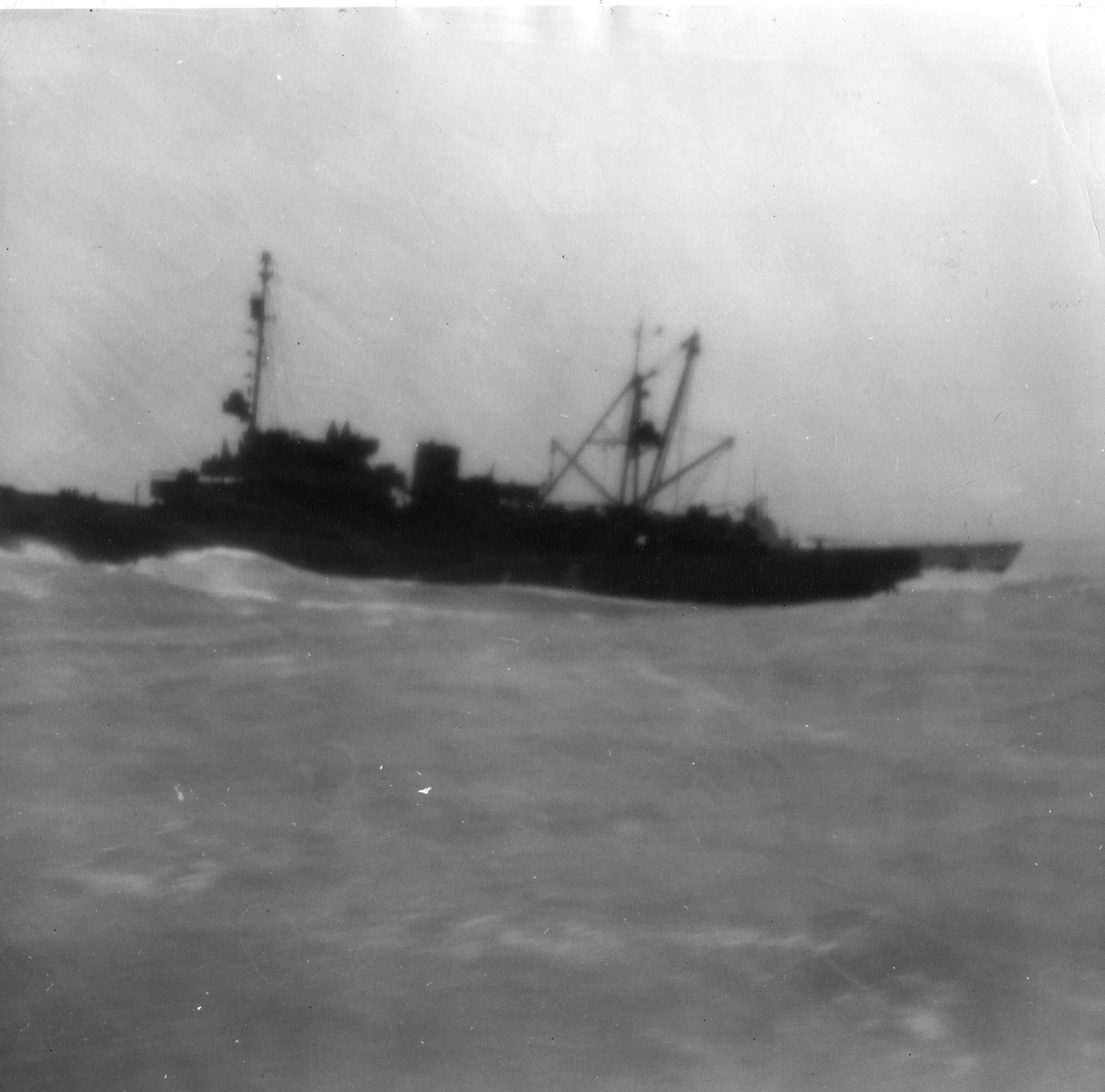The Macaw and its four sister ships constructed by Moore Dry Dock in Oakland ca. 1941-42—Chanticleer, Coucal, Florikan and Greenlet—were the US Navy’s first submarine rescue vessels built as such. The six preexisting ASRs (ASR means auxiliary—submarine rescue) in the fleet—Widgeon, Falcon, Chewink, Mallard, Ortolan and Pigeon—were all converted Lapwing-class minesweepers. The Chanticleer-class ships each measured 241 feet four inches long and 42 feet wide, displaced about 2,000 tons, plus or minus 250 tons or so depending on the load, and drew about fifteen feet. Each was equipped with two three-inch fifty-mm guns and eight twenty-mm guns, a single propeller driven by a 3,000-hp electric-diesel engine, a 9,500-pound diving bell called a McCann rescue chamber designed to fit snugly onto the coaming of a hatch on the deck of a sunken submarine, a boom capable of lifting 45,000 pounds to deploy it, an evaporator for desalinizing sea water, a decompression chamber for divers, and accommodations for a crew of 102 by one account, of 85 by another. The Macaw, when it left San Francisco Bay for the South Pacific on 28 August 1943, carried a crew of 120. It was crowded, and its evaporator malfunctioned, meaning fresh water was in short supply pretty much the whole way. The enlisted men took salt water showers. So, apparently by his own choosing, did Paul Burton.
Despite being a part of the submarine service, a submarine rescue vessel, or ASR (for auxiliary—submarine rescue), lacks entirely the glamorous cachet of the submarines it is designed to rescue. It’s a sort of ocean-going Saint Bernard and close kin to a tugboat.
Of the five Chanticleer-class ASRs built ca. 1941-43 by Moore Dry Dock, the longest lived was the Greenlet (ASR-10). Decommissioned in June 1970, Greenlet was transferred to the Turkish navy, renamed Akin, and restored to active duty for another 47 years before being decommissioned a second time on 17 November 2017. The Chanticleer was sold for scrap in 1974, the Florikan in 2010. The Coucal was sunk as a target ship in a missile test in 1991.
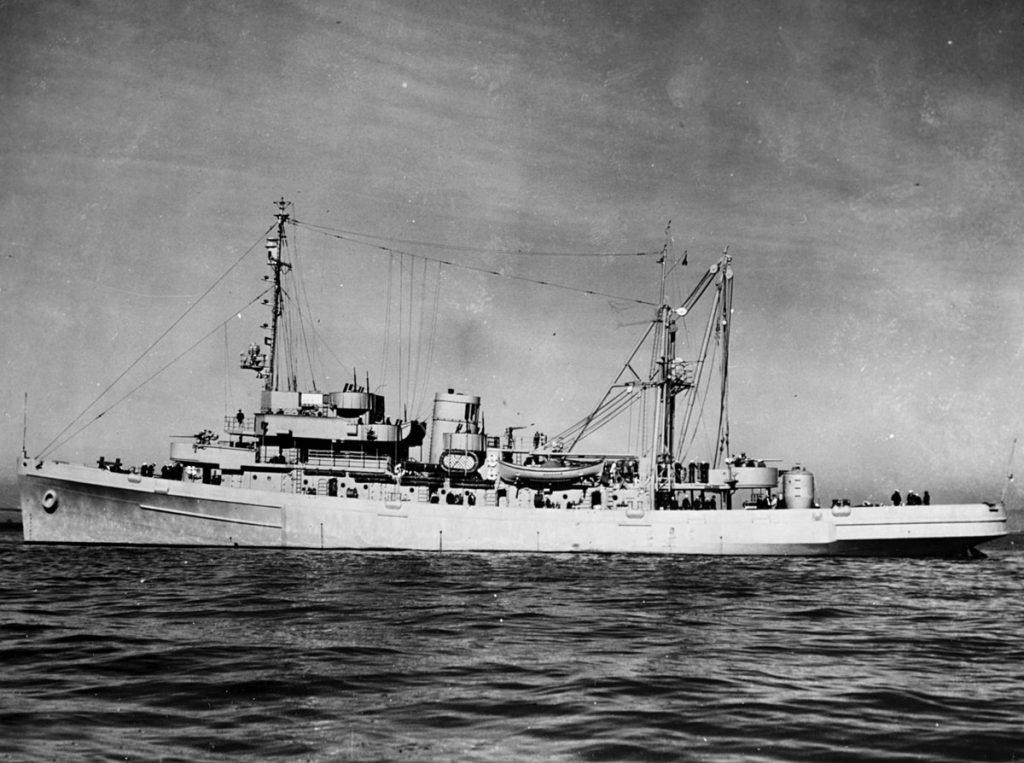
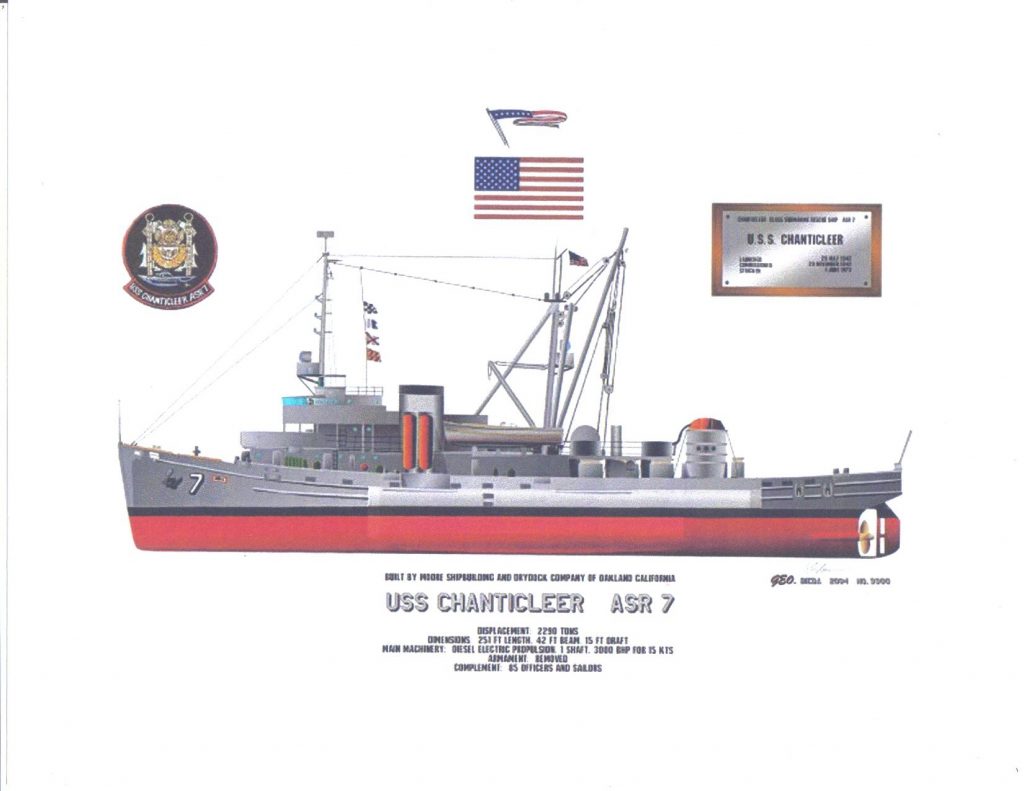
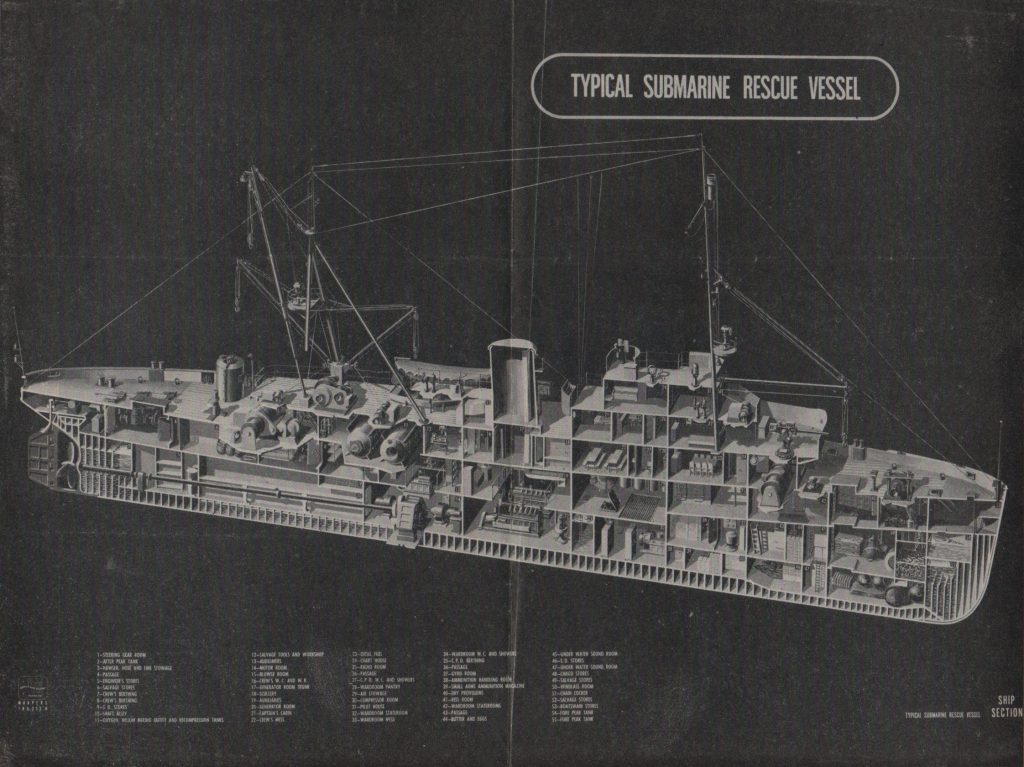
The tripod, the three-legged erector-set construction amidships aft, supported a 45,000-pound-capacity boom more than equal to the task of hoisting overboard the 9,500-pound McCann rescue chamber on the main deck below it.
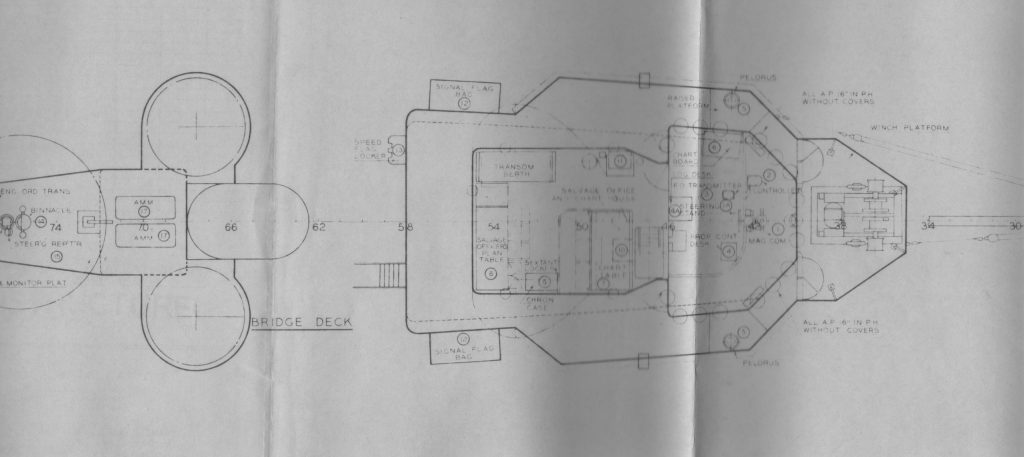
The outer fourteen-sided polygon on the right side of the diagram above represents the bridge deck of a Chanticleer-class ASR. The inner polygon, resembling a pill bottle lying on its side, comprises the pilot house (the cap, forward) and the chart room (the bottle proper, aft). They were the two highest fully enclosed compartments on an ASR, and because the Macaw ran aground conventionally bow first, causing the bow to tilt upward and the stern down, in the ship’s time on the reef the pilot house was slightly the higher of the two. So it was there that the 22 men aboard the Macaw congregated on the evening of 12 February 1944 as their ship began to sink.
In the photo of the Chanticleer toward the top of this page, the McCann chamber is the seemingly cylindrical object projecting up from the main deck just to the right of the aft three-inch .50-caliber gun platform—in other words, the rearmost standing structure on the ship. In fact it was not cylindrical, it was more or less pear-shaped. A McCann chamber had been used once—successfully—before the war, in May 1939, to bring up 33 men from the submarine Squalus, which had sunk in 243 feet of water off Portsmouth, New Hampshire. To my knowledge, no McCann chamber has been used in an actual rescue operation, successful or otherwise, since. But the Squalus rescue confirmed the potential value of the chamber,
